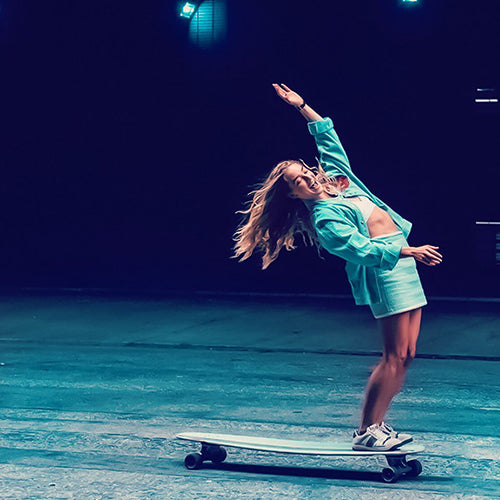
Longboarding 101 - The Ultimate Guide For Beginners
Share
Longboarding 101 - The Ultimate Guide For Beginners
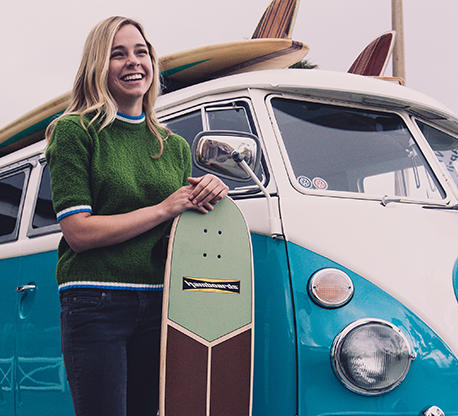
Want to start longboarding but you're not quite sure how it's done. You're at the right place.
Don't worry, we were all beginners once. I remember when I was starting out. I had no clue what board I should get, what equipment I needed or how to even stand on the board.That's why I'm bringing you the basics of longboarding to prepare you for surfing the streets.
Now, if you're a skateboarder, you already have a head start. But, take notice that these two are only similar, not the same.
Related Article: Longboard vs Skateboard
Yes, they both require a board and activate more or less the same parts of the body. But, longboarding is smooth and rhythmical with a more flow to it, while skateboarding tends to be more explosive. Besides, skateboarding is mostly used to perform jumps and tricks, while longboarding is surfing - optimized for cruising and carving.
So, let's start with the first equipment you'll need.

Choosing Your Longboard
First and foremost, you'll need a longboard. And, if you still don't have one of these bad boys, head to our store and choose your ideal first plank.
Beginners are usually unsure about whether they should get a longboard or a shortboard. We suggest you start small with a shorter board and work your way up as you learn the ropes. The best boards for learners are the Biscuit, Huntington Hop, Logger and Pescadito and you'll find them all in our store.
Related article: Longboard Or Shortboard? Which One Is Right For You
Aside from the board, you'll need a protective helmet, elbow and knee pads. It’s not a must but we do recommend them for beginners.
Surfing the pave all padded up probably isn't how you imagined it, but I do suggest that's how you start, at least until you get comfortable on the board. I'm guessing you don't want to fall and hurt yourself and then decide longboarding isn't for you after all. Don’t worry, they say once go long (board), you’ll never go back.
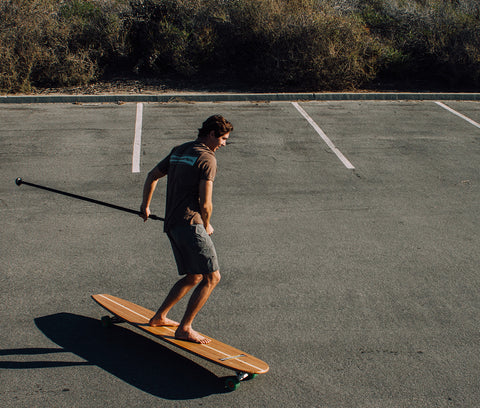
When it comes to the shoes, avoid flip flops and similar footwear, especially in the beginning. Or just ditch shoes altogether and ride barefoot. That's definitely our favorite way to ride here at Hamboards.
For your first lesson, you will need a peaceful location. Make sure you have lots of space, a flat surface to ride on and no cars around. Later on, you will be cruising the streets like it's no big deal, but as you're starting out, make sure to remove any possible danger and distraction.
Take a deep breath, place the logger on the ground and get ready to ride. Now, if you're right-footed, the left foot will be your standing foot and vice versa. Place your standing foot onto the middle of the board, just a little to the front. Use your other foot to push yourself so you get a smooth movement forward, then place that foot onto the board, shoulder-width apart from your front foot, on the back of the board.
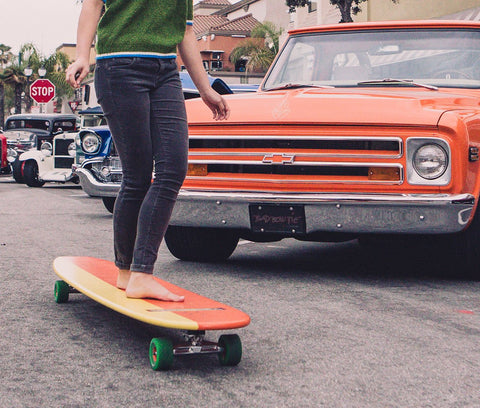
Don't stand rigidly or you might easily lose your balance. Relax your body and bend your knees, and you will feel much more stable on the board.
During the first few days, you probably won't want to experiment too much. These will be your go-to moves to push yourself. But, as you become more confident, try switching your legs so they both get the same amount of practice.
Whenever you feel that you're slowing down, push yourself again. Keep the balance with your standing foot, slowly lift your other foot off the back of the board, and push gently.
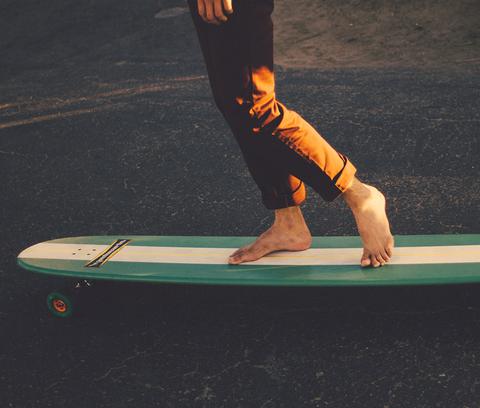
Turning
Turning on the longboard is easier than you think. Just lean your body to the side you want to turn to and the pressure on the board will move it to where you want to go. You will feel the board drop a little to the side before it starts turning. Longboards are much more flexible than skateboards which make turning easier and smoother.
This is easier than you think. Just lean your body to the side you want to turn to and the pressure on the board will move it to where you want to go. You will feel the board drop a little to the side before it starts turning. Longboards are much more flexible than skateboards which makes turning easier and smoother.
As you gain more experience, sharp turns (also known as carving) will become one of your favorite parts of turf surfing. So once you're ready for a challenge, carve around objects to see just how tight and fast you can do it.
Once you get hooked on carving (and you definitely will), try the Fish, our most maneuverable board that provides unparalleled carving experience.
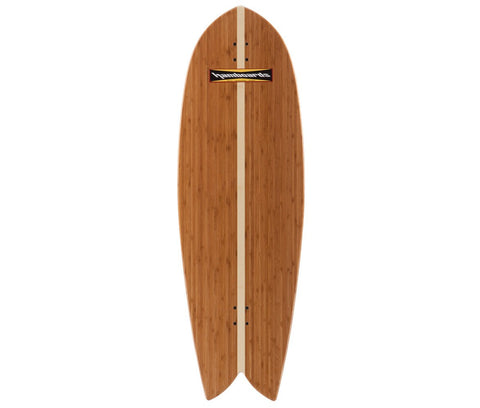
Braking
One of the scariest parts of longboarding beginners is putting the brakes on. But, don't worry, I’ll tell you the secret to safe braking.
Here's what you do. Stand in the same position as if you wanted to push yourself - balance on the standing foot and lift the other foot off the back. Then gently brush your foot against the ground. Aim to do this as gently as possible and the brake will go smoothly. If you apply too much pressure, you might brake too aggressively, lose the board or even fall off.
In the beginning, we suggest you practice on a flat surface. But as you become more secure on the board, you will want to test its speed. For this, it's best if you can find a small hill that slopes down and goes back up so that you're naturally slowed down by the climb.

Don't panic when the board starts to speed up. If you do, your body will stiffen up and you may hurt yourself. Instead, remember to bend your knees and relax your body. That way, you will be able to perform all the movements we talked about much easier.
The Takeaway
You'll face a few bumps on your way to being a road surfer. At the end of the day, practice, like everything else will give you that perfect surf feeling. Don't expect to be flawless from the start. You will make mistakes and you will fall. But when you do, dust yourself off, get back on the board, and try again.You’ll be surprised how quickly you’ll find yourself cruising around the bends.
